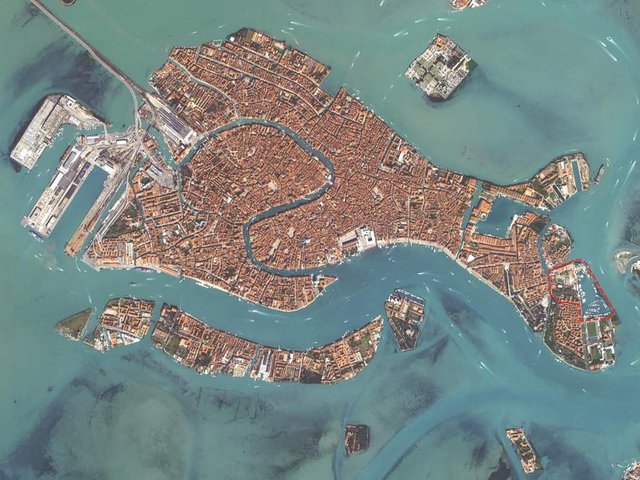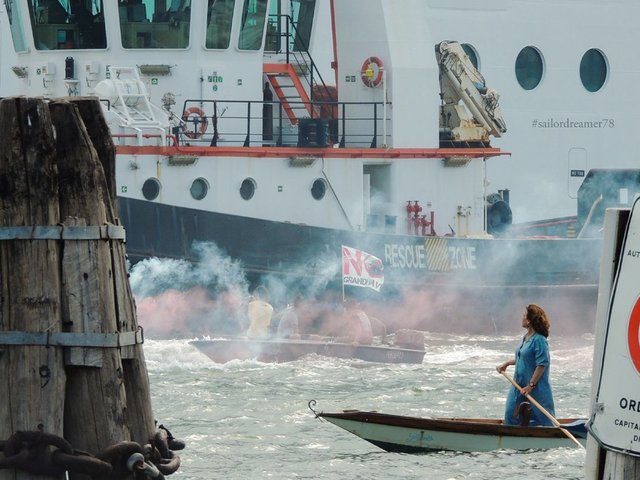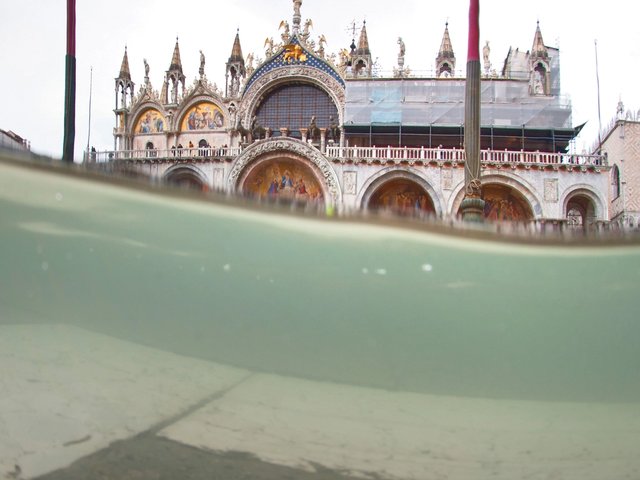In a moment when rising water levels continue to threaten Venice's centuries-old buildings, Jeff Bezos, the billionaire founder and executive chairman of Amazon, has made donations of €1m each to three organisations in the city committed to research into the seas and climate change.
On 22 June, the Italian news agency Ansa published the news that the funds were being allocated to Corila (Consorzio per la Ricerca Lagunare, or consortium for research into the lagoon), Venice International University (VIU) and the Unesco office in Venice.
Francesco Musco, the president of Corila and a professor of urban planning at IUAV (Istituto Universitario di Architettura di Venezia Venice University Institute of Architecture), said that Bezos was approached three months ago through his Bezos Earth Fund, which is worth $2.3billion and dedicated to innovation in the fight against climate change and to protecting nature.
The media has been full of gossip about the lavish wedding of Bezos and Lauren Sanchez—a former television journalist—taking place in Venice on 26 and 27 June. The event has not pleased everyone: there have been weeks of protests by Venetians who feel that their city is being exploited by the glitterati while its underlying problems of depopulation and over tourism are being ignored by the town council.
The protests have included the No Space for Bezos group hanging massive banners with “Bezos” crossed out from the bell tower of St Mark’s Square—and on the island of San Giorgio—and other local activists reportedly threatening to block the boats carrying the guests by filling the canals with inflatable crocodiles. An action by Greenpeace and the Everyone Hates Elon group saw the vast floor of St Mark’s Square covered with an image of Bezos laughing and the caption: “If you can rent Venice for your wedding you can pay more tax”.
Actions not words
When the hoo-ha has died down, the first serious question is whether and how the three recipient institutions will collaborate on a subject of great importance to the world, but also of urgent and practical importance to the fragile city itself. Currently, the talking is not converting into action.
There is no shortage of good scientific research being done into the physical state of the city at the two very good universities and the CNR (Centro Nazionale di Ricerca), whose members form part of each others’ committees and speak at each others’ conferences. And thanks to sponsorship from private organisations such as Prada, as well as frameworks such as the Architecture Biennale taking place this year, these talk-fests have proliferated, together with didactic shows.
In June alone, there has been the Venice Climate Week, of which IUAV is a partner, featuring discussions about the state of the planet. Almost simultaneously, there was the Ocean Literacy World Conference, which had the backing of Prada and the town council. The Venice Sustainability Foundation, meanwhile, with the backing of government, the town council and major Italian energy companies devised a “Special Project” called “Intelligent Venice: the most ancient city of the future”. It was a project put together in collaboration with Corila and the universities.
“People’s memories are short,” says Corila’s president Francesco Musco. “They forget that only five years ago, they were being flooded regularly by the acque alte [high tide]. Then the mobile barriers came into action [between October 2020 and March 2025 they have been raised 100 times] and it doesn’t happen anymore, so they think the threat to Venice from the water has been solved, but they are unaware of the chronically rising water level”.
These rising waters are eating away at the brickwork of buildings. Mario Piana, the leading expert on the construction of Venetian buildings and the architect in charge of St Mark’s basilica, predicts this phenomenon will lead to mass destabilisation of structures in the city that have stood for half a millennium, with water levels expected to rise to at least half a metre above their present level by the end of the century.
Corila, one of the three recipients of Bezos’s generosity, knows this because it was an important player in the meeting of 120 scientists and engineers held at Cambridge University in 2003—with funding from the Venice in Peril Fund—to resolve the question once and for all of whether Venice needed barriers or not. At the end of three days, the overwhelming conclusion was that they were indispensable.But the qualification has been forgotten: “They will also give time to plan what has to come next”.
Twenty-two years have gone by and not only is there no plan for next steps, but many deny that there is even any need for such a plan. If Jeff Bezos’s €3m leads to realistic collaboration within the Venetian scientific community and between this community and the government, he will indeed to have made a great contribution to Venice and the world.
• Anna Somers Cocks is the founding editor of The Art Newspaper, is a fellow of the Istituto Veneto di Scienze, Lettere ed Arti, and was chair of the Venice in Peril Fund





